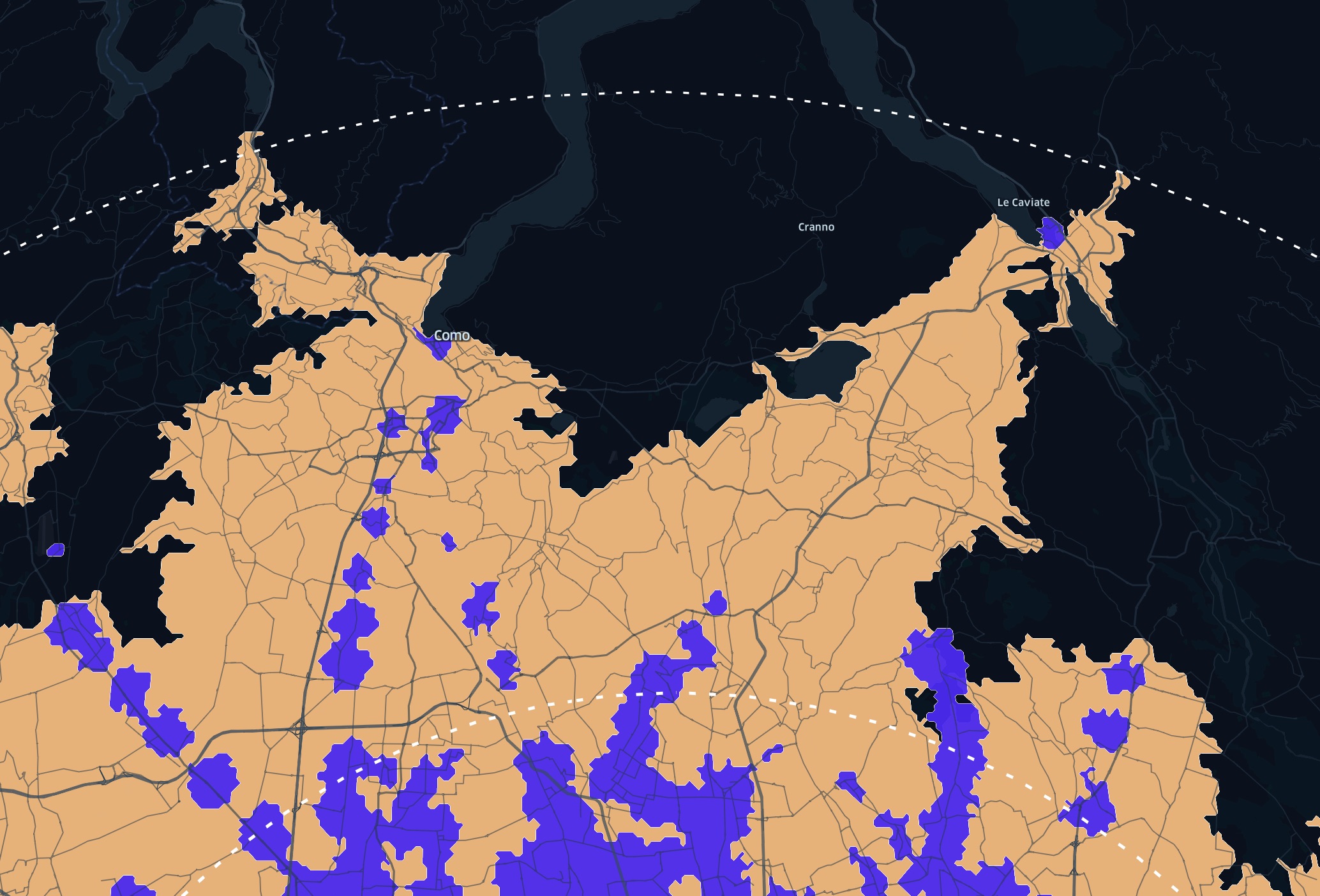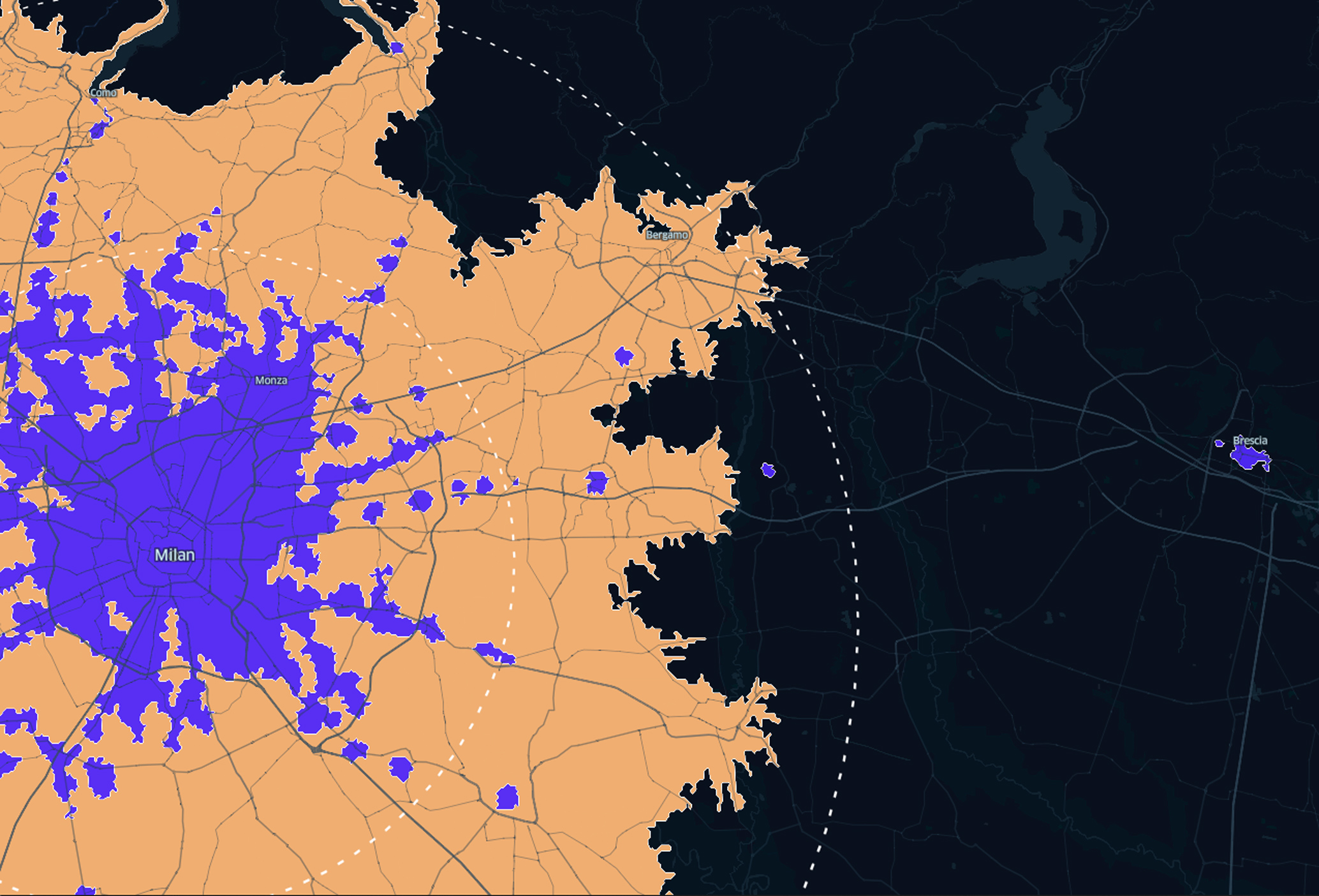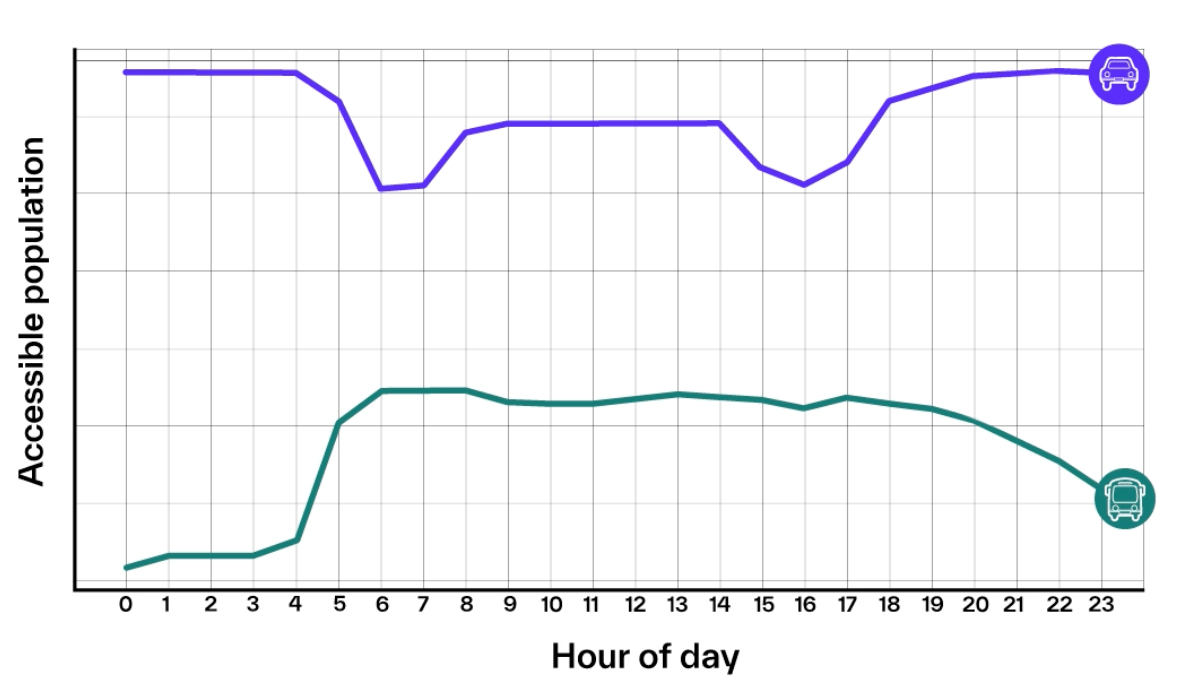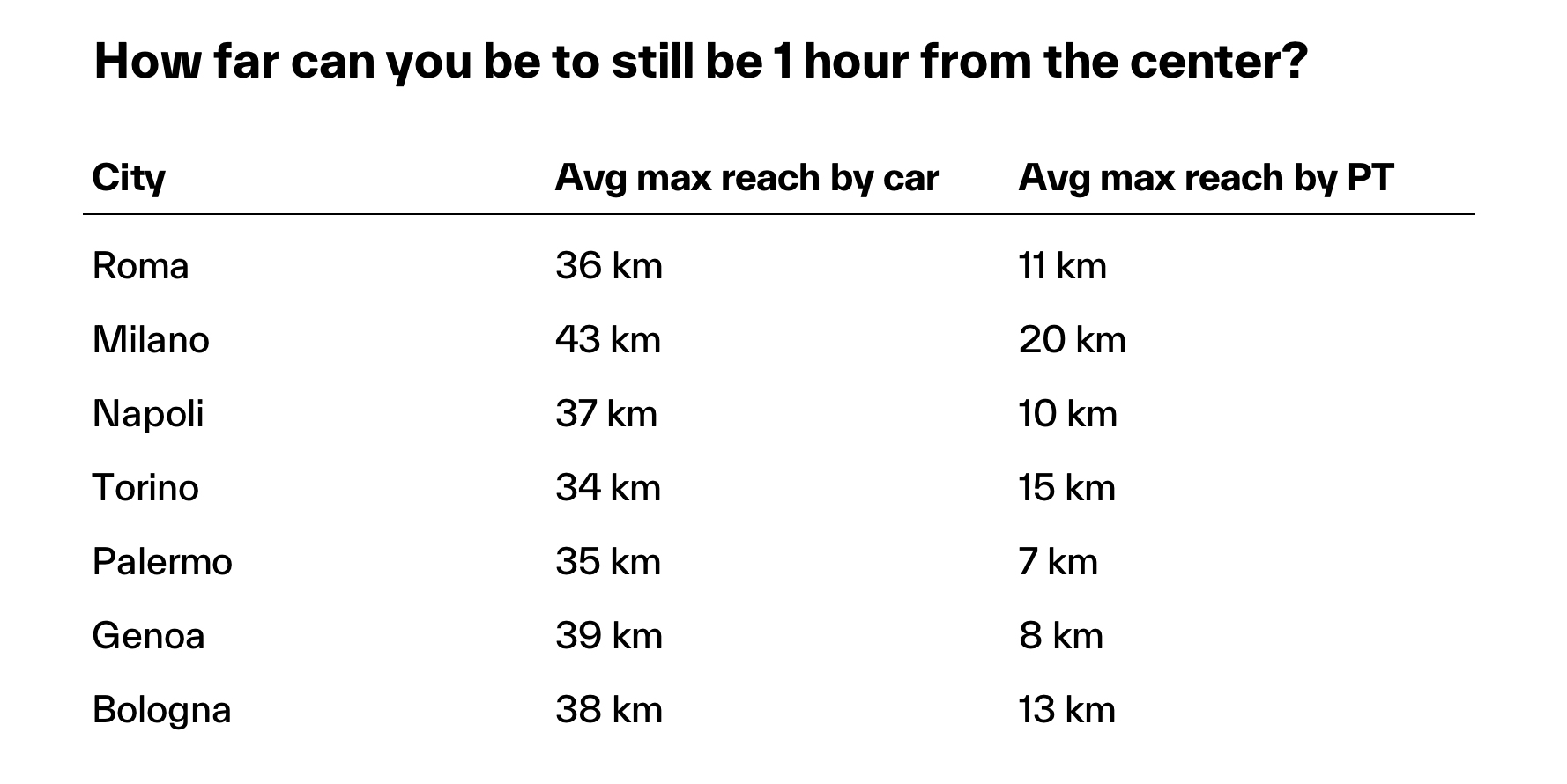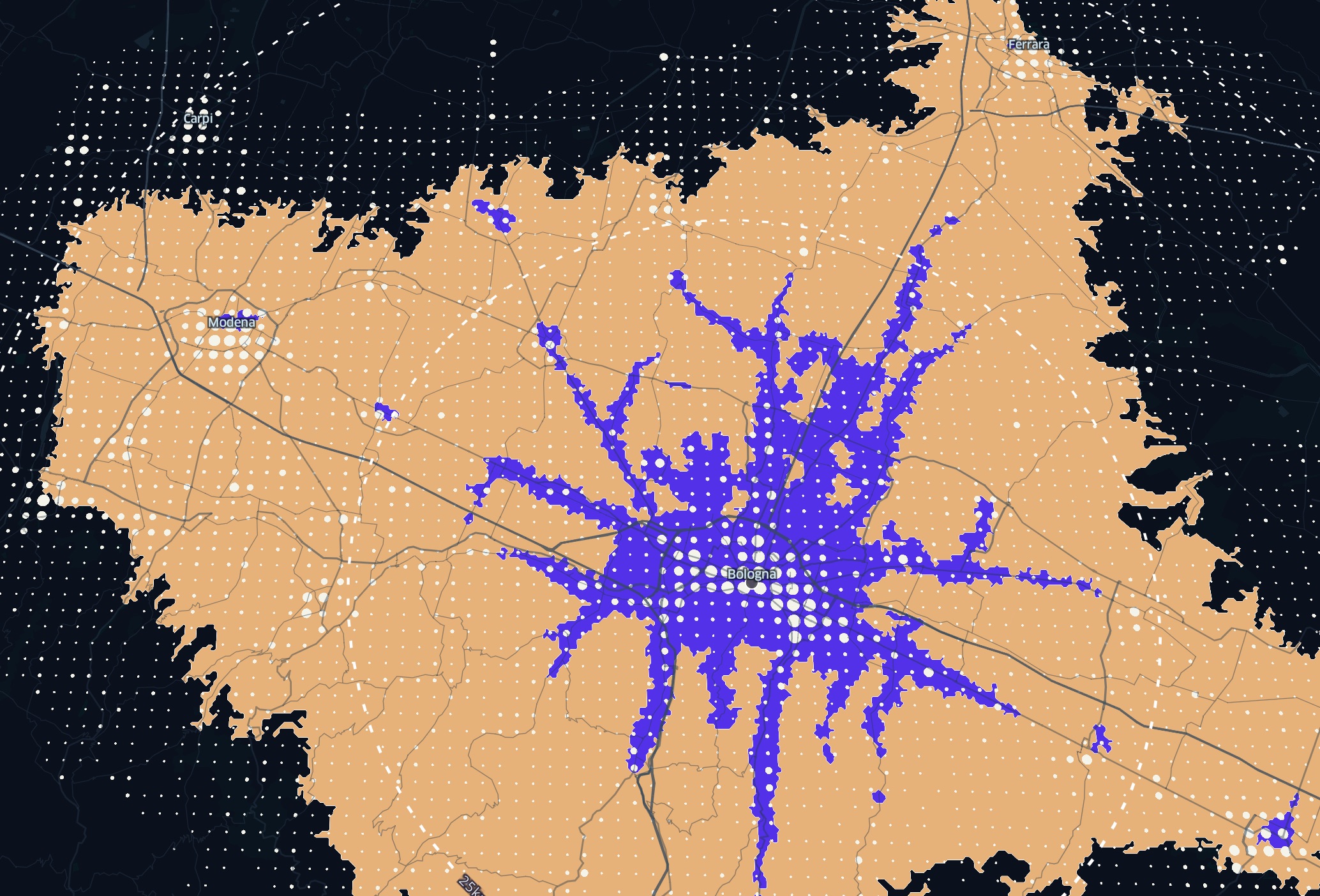Italian Cities Accessibility
Italy
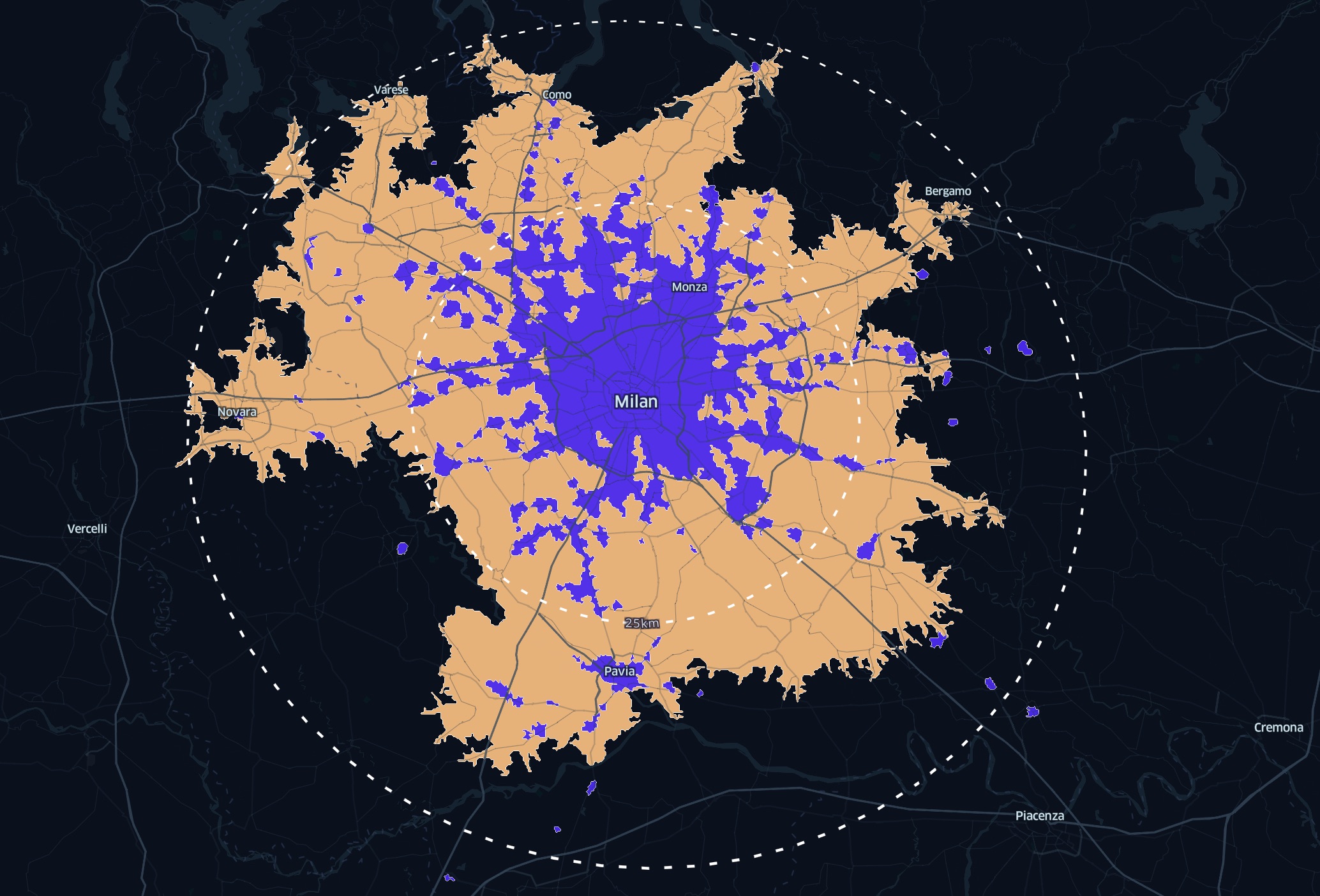
How far away would you be able to live to commute to the centre of Milan in just one hour? Or to the centre of Rome, Turin, or Naples within the same time?
This question was the starting point for the transport data research on seven major Italian cities.
Naturally, it depends on many factors, in particular:
• the mode of transport you choose,
• the time and day of your commute.
We know that rush hour traffic affects the distances we can travel by car in a limited time period, but how exactly dose that look on a map, and does this also apply to public transport?
Check out the interactive map below to see whether or not you reside within one hour from the city centre at all time frames of the day.
To navigate in full screen mode, please press the button below the magnifying glass.
Location
Italy
Client
MIC-HUB
Main expertise
Public Transport Accessibility; Car Accessibility; Data Analysis
PROJECT HIGHLIGHTS
- Transport data research on seven major Italian cities
- Examination of TravelTime data and construction of 1-hour isochrone for each hour of the day for both public transport and driving
- Analyses of the distance coverable within each time frame throughout the day
Explore the accessibility of Italian cities
Project gallery
Our contribution
For the purposes of this research, we used a simplified methodology based on isochrones. We took a 1-hour isochrone for each hour of the day for both public transport and driving - creating 24 isochrones for each mode of transport in each city. We then analysed the distance covered and popultation reached within each time frame throughout the day.
The data revealed the following findings:
1 - The public transport and car isochrones show contrasting accessibility patterns in terms of both area and population accessibility.
It is generally easier to access the city centre at night time by car than by public transport due to a lack of public transport services at night. During the day, however, accessibility to the city centre by public transport becomes much more efficient than by car due to the high number of road users and the resulting traffic.
2 - The average daytime range (5.00 am – 8.00 pm) for the maximum reach of accessibility, i.e. how far you can travel on average to still be 1 hour from the centre, varies considerably between cities.
3 - Public transport usually follows the highest population density areas, while driving allows access to all population areas within its reach, becoming more competitive in the less densely populated regions.
An area up to 20 times wider can be reached by car. However, public transport accessibility for many people - measured during the project in terms of people reached per km2 - is much more effective.
The findings above show us once again that public transport is a much more effective way of providing access to people in urban environments in our society. Even though cars offer greater coverage, cities cannot function if everyone moves by car.
It is therefore essential that both modes of transport are used to their best effect.
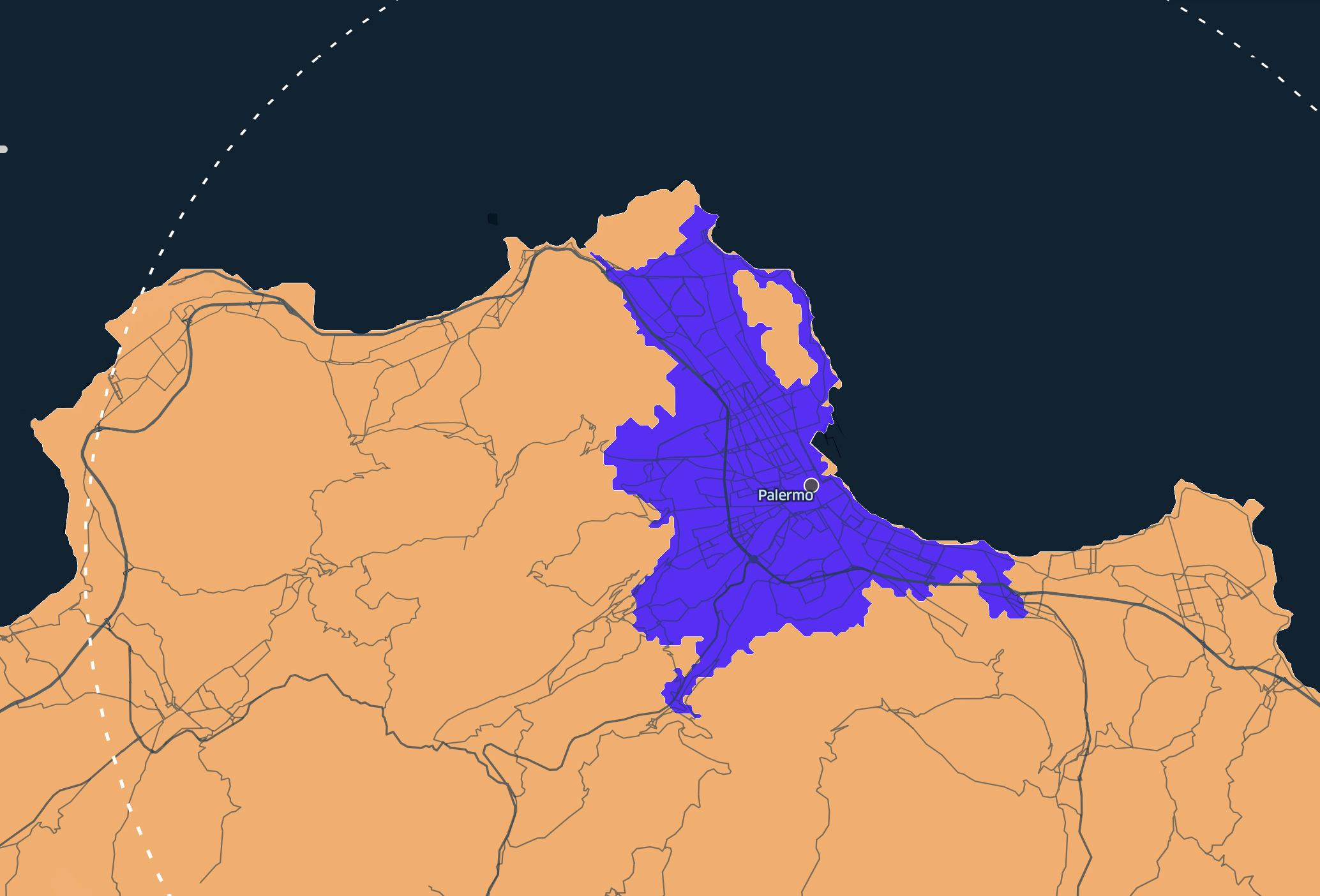
Public transport accessibility is less than half that of car accessibility. Within the one-hour time limit, it is as low as 20% in Genoa and Palermo, reaching 44-46% in Turin and Milan
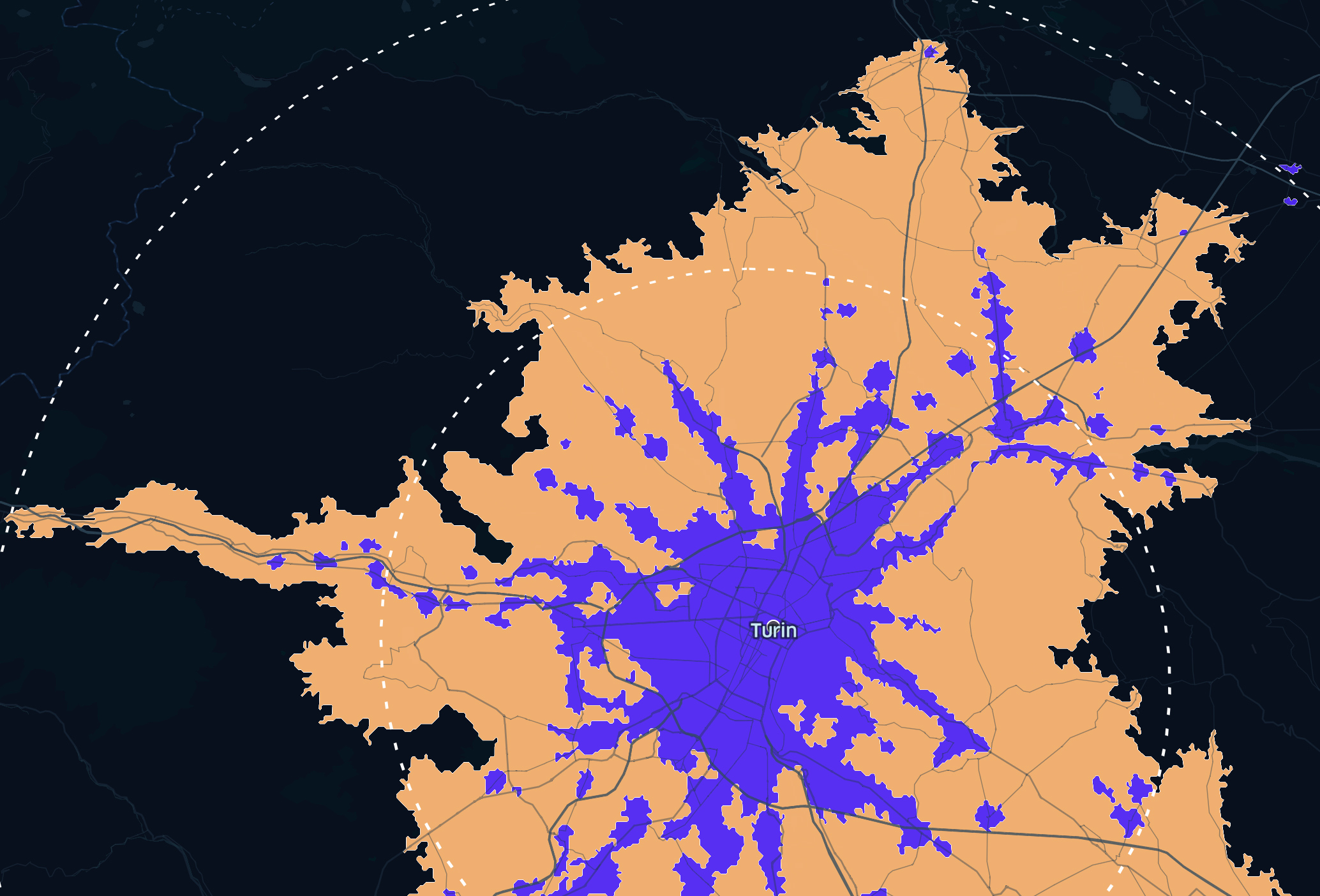
In Turin and Milan, accessibility by public transport reaches 44-46% of accessibility by car, within the one-hour time limit
